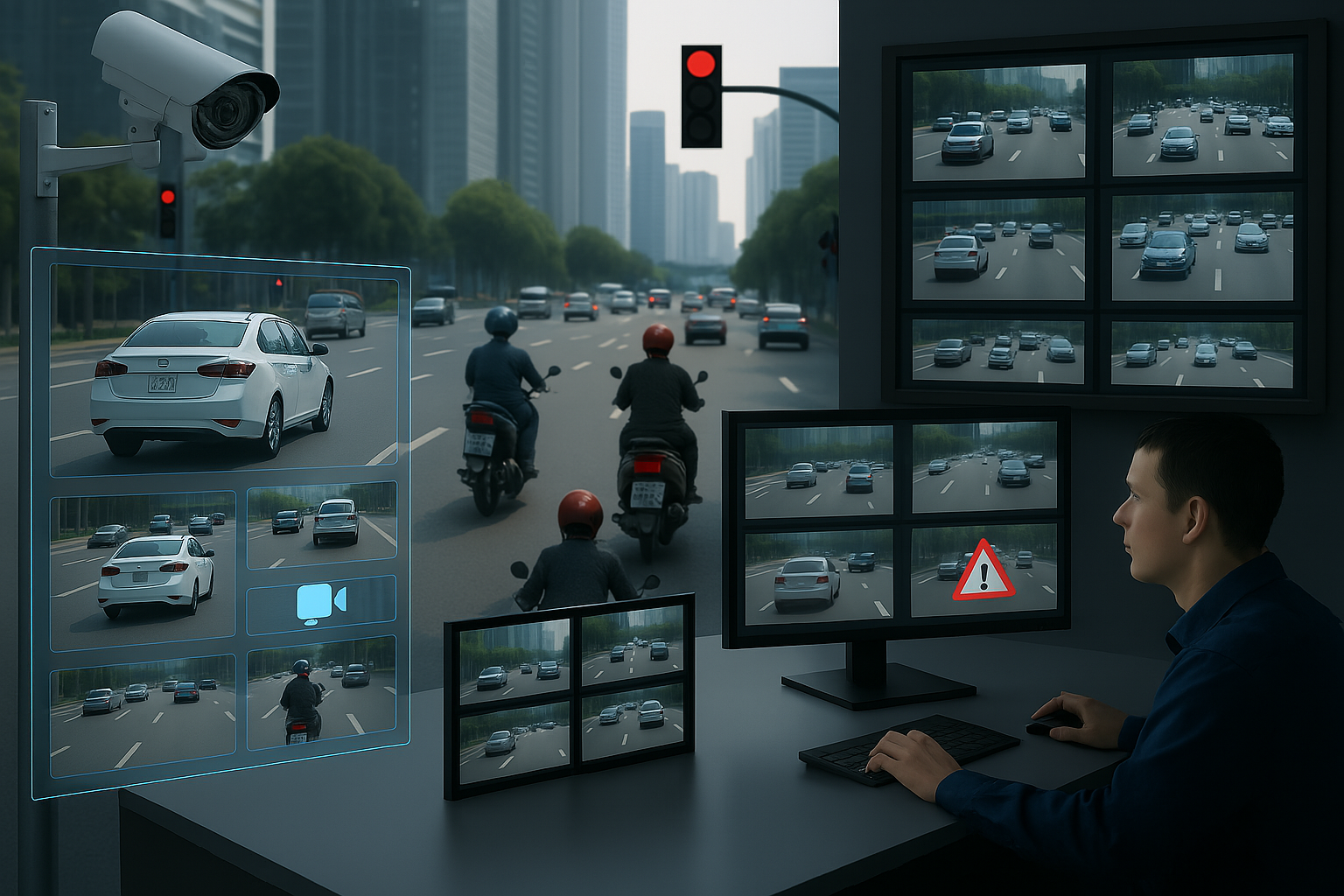The Viettel Traffic Surveillance System (V-TSS) enables centralized management, providing tools to support monitoring, detecting, and handling traffic incidents according to established procedures. The system allows real-time camera monitoring, issues instant alerts, and assists relevant authorities in effectively supervising, managing, and regulating traffic.
Email:
Cskhdn@viettel.com.vnCustomer care:
18008000 - branch 8
The system utilizes IoT devices such as radar, cameras, inductive loops, road sensors, and data collection technologies like RFID, ANPR, and vehicle GPS to monitor traffic conditions in real time.
Monitoring devices are interconnected and linked to a centralized management server to enable seamless data sharing and coordinated traffic control.
The traffic monitoring system continuously collects and stores data on traffic flow conditions, vehicle speed, density, and traffic-related events.
The system leverages AI algorithms to analyze and forecast traffic conditions, detect road user behaviors (e.g., traffic signal violations, aggressive behavior, crowd gatherings), and optimize traffic control processes.
The system continuously monitors key factors such as vehicle flow speed, traffic density, and congestion status, providing accurate traffic information to authorities and road users.
Utilizes cameras and sensors to detect traffic incidents and violations (e.g., red-light running, speeding, illegal parking), and sends alerts to relevant authorities for timely intervention.
Delivers statistical reports and analysis on traffic conditions, traffic control operations, parking lot usage, road maintenance activities, public transport operations, electronic fare collection revenues, traffic violations, and road safety across various routes—enabling authorities to gain a comprehensive overview and make informed decisions.
- Management agencies can continuously and directly monitor traffic conditions, enabling timely decisions to adjust and optimize vehicle flows.
- The system collects and analyzes data (density, speed, violations, etc.) to evaluate the effectiveness of current strategies and propose improvements.
The monitoring system detects incidents early (accidents, congestion, fires, etc.) and immediately notifies the authorities, enabling quick response and minimizing damage.
Real-time data and images support efficient vehicle coordination and routing, especially during peak hours, helping to minimize congestion.
- Early detection and resolution of incidents help reduce infrastructure repair and maintenance costs.
- Reducing congestion and accidents also means lower social costs, including healthcare, insurance, and related losses.